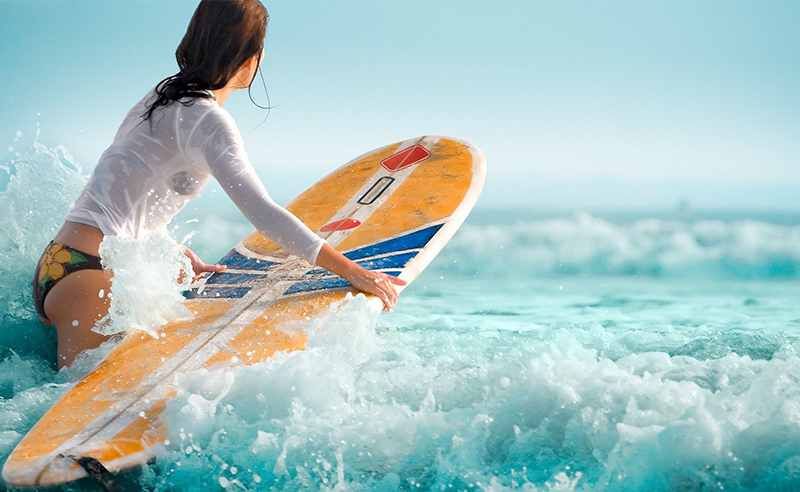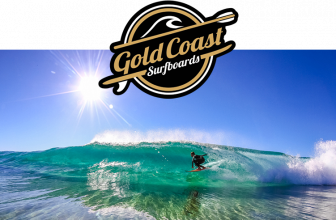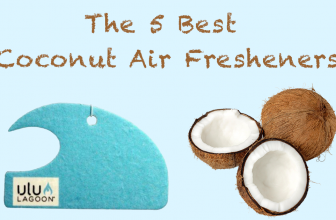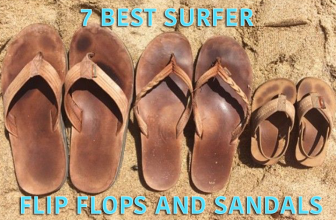
Hybrids are a difficult to trace back to a specific period in time, as they aren’t a specific type of surfboard.
Technically, every board out there that doesn’t have a “traditional” setup is a hybrid board. So every board is a hybrid board then right? Sort of, though let’s try and trace it back.
Modern hybrids as we understand them today, are mixtures between shortboards and fish surfboards.
Shortboards came around in the 1960s and fish surfboards became popular in the late 1960s and early 1970s.
The reason that they became popular was that shapers had access to better shaping technology, materials, resources, etc.
With that knowledge, we can figure that hybrid surfboards were only becoming a thing as the 1970s rolled around.
Essentially, it’s nearly impossible to pin down who made the first hybrid board, as there was never an exclamation or date of creation, more or less a snowball effect of board shaping experimentation.
How Did These Boards Become So Popular?
The modern “hybrid” didn’t really become popular until the early 2000s after the second shortboard revolution in the 1990s. That theory comes from the fact that shortboards in the 1990s had far more rocker and were much narrower. Shapers began widening the bodies and flattening the boards in 2000s and pros began adapting to riding them.
They became so popular because they were functional for everyday surfing. Like fish surfboards, they were easier to paddle, had more stability, and could be surfed in low-level conditions. Like a shortboard, they were maneuverable and could be used in competitive surfing. They gave surfers of all levels the best of both worlds.
So What Exactly Is a Hybrid Surfboard?
Hybrid surfboards can feature a variety of characteristics from one board to the next, though there are some things that stay true in the general build. Hybrid boards tend to have much lower rocker and wider outlines. They are thicker throughout and have tons of room under the chest that makes popping up and standing much easier.
The tails are typically pulled in just a bit as well. The best way to differentiate them is the outline.
They’re a little “stubbier” than a shortboard, but still has a slimmer design than a fish.
Why Did Hybrid Surfboards Catch On?
One word: Functionality. You’ll find that most serious shapers have at least one hybrid surfboard in their lineup. We would even dare to say that they’ve begun to catch on more than shortboards. This is because hybrids are high-performance boards for the everyday surfer. Most surfers aren’t pro and don’t live in places where the waves are amazing every single day. If you’re reading this, then that is most likely your case. Hybrid Surfboards were made to provide these average 9-5 day job or full-time school surfers with a way to get out in any kinds of conditions and surf with the most versatility.
Why Should I add a Hybrid Surfboard to my Quiver?
There are literally a hundred reasons why everyone should have a hybrid surfboard. Honestly, if you could only have one board, we’d recommend a hybrid.
For starters, the flat rocker on these boards with the complementary width, allows you to catch waves much easier and ride them for longer, even on subpar days. Mushy waves require a bit more balance to catch longer lines and the hybrid can definitely provide that.
Second, the fact that a hybrid is still short gives you the ability to maneuver and turn tight in pockets that would be next to impossible with a longboard.
Lastly, if you’re a bigger guy or gal, a hybrid surfboard can give you a little more beef to ride on than a shortboard, which you might find difficult to find the balance sweet spot on.
Frequently Asked Questions
Is it possible to ride hybrid surfboards in bigger conditions?
Absolutely! We wouldn’t recommend them in vertical surf however, as the low rocker makes it more difficult to stick deeper drops off of the top of a steep wave. In any case, it depends on the hybrid. If you’re looking to surf bigger waves, there are hybrid designs you can look for to help with that. For example, a convex vee nose can shift the water around you and give you a pocket to rest in.
Final Thoughts
Hybrid surfboards are the future of surfing no doubt. They have a shorter history compared to most boards because they are still somewhat of a burgeoning concept that has only take form in the past few decades. Surfers are realizing that they can make the most out of their time in the water with hybrid surfboards, and what’s more important than enjoying every minute of your time surfing? We can’t wait to see what the future holds for this new fleet of boards!





